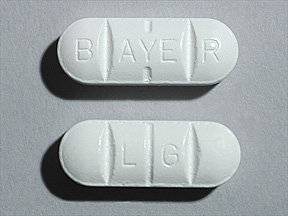
If charlatans had been selling tapeworm pills, these authorities would surely have been down on their heads so hard they’d have been nibbling their own intestinal walls. These cures – Marmola, Rengo, Fatoff, the Newman Cure, and many more, attracted a great deal of attention from the American Medical Association and the Bureau of Chemistry of the US Department of Agriculture (now the FDA).Īfter the Pure Food and Drug Act of 1906, the Bureau of Chemistry clamped down on the false claims made for patent medicines, and during the same period the anti-quack investigations of the AMA’s Arthur J Cramp were being disseminated to the public as books and pamphlets such as Nostrums and Quackery. Swain was acquitted, but there’s a chance this rumoured practice – not related to weight loss – became confused with the various obesity cures on offer some years later. He allegedly gave his patients capsules containing artificial tapeworms that would navigate the digestive system and emerge as ‘proof’ that Swain’s treatment worked. And from one of these practitioners comes some possible inspiration for the diet pills story.Īt Peru, Indiana, in 1899, a medicine-show man named W I Swain was twice arrested for practising without a license. Itinerant specialists, using anthelmintics based on male fern, made a living helping people ditch these unwanted passengers. It was also a time when, for most people, tapeworms were not desirable companions. When exercising her own agency, the woman makes a ridiculous decision – and at a time of increasingly vocal campaigns for women’s suffrage, such undermining of female capacity for independent thought does not come as a surprise. As in the 1912 version, the customer is presented as a wealthy woman whose foolishness contrasts with her husband’s sensible attempts to analyse the pills. In 1914, a report in the Marion Daily Star (Ohio) had someone forking out $300 for a liquid-filled capsule housing ‘some form of life’. The tapeworm pills tale began to feed upon the digestive juices of collective revulsion, adding new segments of exaggeration with every incarnation. That’s the wildest story I’ve heard of for some time.’īut wild stories are difficult to tame. It is a fine yarn, but simply untrue.’ĭr John F Anderson, director of the Hygienic Laboratory, said: ‘It makes me creep to talk about them. The only way I have ever heard of people eating tapeworms, either wholly or in part, was by eating meat which contained them. ‘Yes, this is the public health service, all right,’ Blue reportedly told the paper, ‘and I believe I am at the head of the service.

The only identifying detail was the mention of the Washington health service, so it was to Surgeon General Rupert Blue that the Washington Post went for comment. But was this 1912 report actually true? The woman, the pill vendor and the government agent weren’t named.

More than a hundred years later, numerous websites assert that nineteenth- and early twentieth-century women merrily chugged tapeworms to mould their figures. ‘ The fat woman who is not satisfied with the way she is built,’ opined The Charlotte Observer (North Carolina) ‘ deserves no more sympathy than she will get from a tapeworm.’ The news dispatch from Peoria brought forth some stinging commentary: It was an amazing story – the compelling revoltingness, the quack’s audacity and ingenuity the opportunity for the timeless pastime of mocking female vanity and ridiculing the overweight. A society lady, encouraged by a friend’s success with an easy new weight-loss treatment, pays $25 for ‘ two rather large and suspicious-looking pills.’ Her husband sends the pills to be analysed by the Washington public health service, and before long a ‘government secret official’ appears, informing him that the pills contain ‘the head and first link of the body of a tape worm and sufficient nourishment to maintain life for probably a week.’ Peoria, Illinois, 1912: the horror begins.


 0 kommentar(er)
0 kommentar(er)
